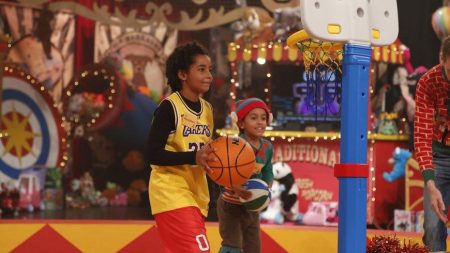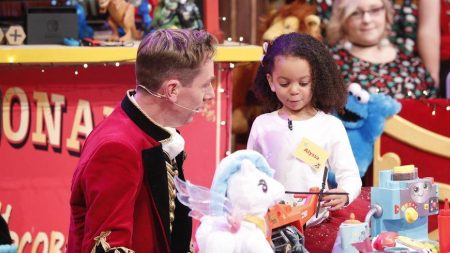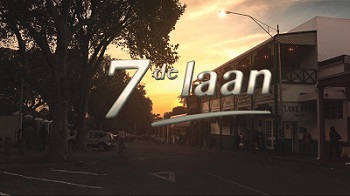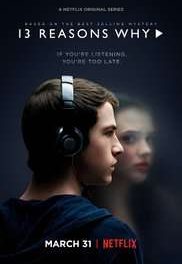RTÉ recognises that it is in the privileged position of reflecting and shaping our understanding of our society and culture. Few organisations are as influential in Ireland or require greater trust than RTÉ.”
(RTÉ spokesperson, 2017)
In 2018 the Irish state broadcaster issued its 2018-2020 diversity and inclusion strategy. In the report, RTÉ stated that “we have re-examined our approach to D&I, both on air and in our workforce (off air)…we are collectively driving the necessary changes in the ways we work and how we recruit talent and select contributors.” This followed an RTÉ commissioned report the previous year that identified a significant gender pay gap among top earners at the broadcaster as well as a lack of diversity in its staff. The gender pay gap dominated news headlines for months after the announcement of the report’s findings and RTÉ’s diversity and inclusion strategy no doubt sought to address some of these issues. Throughout the strategy publication much reference is made to commitments to enhance diversity within the workforce as well as throughout RTÉ’s content. On page six of the document, for example, RTÉ states:
“RTÉ, through a more diverse workforce, is committed to reflecting the reality of Ireland as a nation made up of individuals with a wide range of social backgrounds, thinking styles, perspectives, experience, age profiles, religious beliefs and so on.”
On the same page it commits to gender balance across the organisation and, “where possible, within key levels of management.” It also commits to increasing representation of people from non-Irish backgrounds, those with disabilities and members of the LGBTQI community. In terms of its content it notes:
“RTÉ is determined to create relevant content that reflects the diversity of an ever-evolving nation and explores the differing experiences and realities of Ireland’s people. To do this effectively, we will ensure that there is fair and authentic representation of gender, age, social experience, sexual orientation, race and ethnicity, disability, civil and family status, religious beliefs and membership of the Traveller community in our content and on our services.”
In terms of gender, at least, RTÉ has made much effort to address issues around representation over the past few years. Over the last year, it has recruited a number of female presenters and reporters across its radio and television news and current affairs programmes. In October the broadcaster committed to increasing its coverage of women’s sports by 20% over the coming years as part of a wider national campaign called 20×20. Over the past year, a range of programmes centered on women in historical and contemporary Ireland have been broadcast including No Country for Women (19th June 2018, RTÉ), the cross-platform series The Big Picture: A Woman’s World (Nov 2018, RTÉ) and the just-released online documentary series on women in sport, We Run the World (Nov 2018, RTÉ). Between the diversity and inclusion strategy and the widely promoted female-centered programmes, RTÉ seems to be putting much effort into strategically positioning itself as a progressive and inclusive broadcaster.
It is through this lens that I want to explore a recent broadcast: The Late Late Toy Show (30th Nov 2018, RTÉ 1) and to measure it against some of the commitments made by RTÉ as well as its self-positioning as an egalitarian broadcaster conscious of its role in “shaping our understanding of our society and culture” particularly in terms of its representation of gender.
Broadcast as an annual episode of the long-standing chat show, the Late Late Show (RTÉ, 1962-), the Late Late Toy Show (LLTS) features the host (Ryan Tubridy) and a number of child participants reviewing a selection of toys in advance of Christmas and engaging in a number of dance and musical performances. The broadcast of the LLTS has been noted as “one of the biggest nights of the year for any Irish person.” It has high viewership among adults and children, has historically marked the beginning of the Christmas holidays for many and it promotes a range of toys and games that may form suitable Christmas presents for children.
Ordinarily, a programme like this sits outside of any socio-political positioning by broadcasters. Children’s television is less often (although not always) in the focus of efforts to inspire or shape social change. As a programme aimed at an audience of families more generally and children more particularly, the LLTS has not historically aimed to fit into the overall profile of RTÉ’s more socially or politically framed programmes such as those aforementioned documentary and current affairs ones (although the Late Late Show has done so). However, I think it is in this space of children’s television that we see the limitations of RTÉ’s employment and representation efforts. This year’s LLTS was noted for the diversity of child participants. There was fairly equal participation of girls and boys, inclusion of children with disabilities and children from non-Irish backgrounds. The show drew attention to health and disability issues in particular segments that were well received by audiences. In other words, it did a good deal of representational work in foregrounding and reflecting the diversity of children and childhood experiences in Ireland, thus seeming to fall in line with its diversity and inclusion strategy in terms of representation within broadcast content. However, I would argue that this was undermined by its rigidly conservative production of gender normativity that insisted upon the segregation of the sexes according to perceived interests in and affinity with certain toys as well as through musical performances and interactions with the host. Ultimately, diversity as evidenced through visibility was compromised by persistent reversion to gender stereotypes.
Although the LLTS is but one programme that evidences rigidly segregated ideas of male and female roles in childhood, such representations conform to general and global patterns of gender stereotyping in children’s media. “A large portion of children’s media and related merchandizing…is promoting a highly gender-segregated world, along traditional and stereotypical constructs of femininity and masculinity and the continuing marginalization of girlhood.” (Lemish, 2014: 179) As Reinhard, Olsen and Kahlenberg note, it is “important to understand these representations because children’s media frequently act as socializers.” (2017: 1) Given the broader tendency of conformist heteronormative gender representations, media texts work to suggest appropriate genders for the sexes. Therefore, ‘within this media ecology, children can grow up with specific ideas regarding how they and others should behave.” (ibid) In this respect, despite the work that a broadcaster such as RTÉ might do in offering non-traditional representations of gender to adult audiences, it paradoxically, and perhaps more problematically, produces contradictory and conservative viewing positions for younger audiences. In other words, RTÉ may be socialising its audience of children into gender norms only to attempt re-socialisation of its adult audiences out of these very norms.
These social norms are obviously represented in the LLTS through segments in which children showcase and demonstrate various toys. The toys act as a gendered frame through which each child’s identity is performed. Sports, games and construction/building toys are largely demonstrated by boys. Cooking, gardening and care-giving toys are largely demonstrated by girls. Lemish notes that media targeted at children perpetuate restrictive ideologies of masculinity and femininity at the cost of the representation of richer, more diverse experiences of boys and girls. (2014: 179) Lemish identifies a number of representational tropes that broadly define girls and boys in media. Girls are passive, domestic, care-giving, sensitive, vulnerable and are “defined more by their appearance than actions.” (179-180) Boys are active, rational, competitive, aggressive and funny. (179) Studies of various children’s television genres suggest that while individual genres might have specific forms and patterns of gender stereotyping, collectively they produce somewhat consistent representations of gender that are traditional and binary. (Thompson & Zerbinos, 1997; Lewin-Jones & Mitra; 2009)
In the case of the LLTS, a selection of some key segments evidences such gender stereotyping. These segments include the toy demonstrations by girls and boys in which the latter are not only given more attention and ‘voice’ but, in addition, opportunities are taken for re-inscribing traditional ideas of masculinity. This is mainly done through the performance of sports and representation of boys as sports enthusiasts as well as the rewarding of them with significant sports-related prizes. For girls, traditional femininity is emphasised through their demonstration of toys associated with domesticity and care-giving. Girls receive fewer prizes and are less celebrated for personal achievements or triumphs over adversity. This is especially evident in my first example which forms the finale of the LLTS. In this segment young cousins Grace and Scott are invited to share their story of triumph over tragedy. Grace, who has leukemia, received a bone marrow transplant from Scott the previous year and is recovering although still visibly frail. Following a brief chat with the mothers of each child and with Grace, the host turns to Scott, whom he calls a hero. Importantly, it is not Scott who demands such attention. He appears shy. Rather it is the focus of the programme-makers that insist on centering him in this family story. Scott’s bravery is rewarded with a visit by players from the Irish rugby team and a selection of gifts from them. In this sequence, then, achievement is not framed through the young girl, Grace, who has survived an aggressive illness but through the boy who supported her.
This works to implicate the segment in a narrative of female victimisation and passivity, with the boy acting as saviour and hero. This echoes Lemish’s finding that “female characters in most media texts for children provide the background narrative for the adventure and are there to be saved and protected by the males.” (2014: 180)
This celebration of boys’ achievements is echoed elsewhere. Michael, a blind boy, is also rewarded with a visit from his sporting hero. Here, a potentially non-hegemonic masculinity is mitigated by his abundant enthusiasm for Irish sports. (Myers, 2012) His hero calls him a fighter and Michael’s commitment to sports participation work to associate him with traditionally masculine ideals of activity and aggression. The sporting achievement of boys is also represented in a segment in which brothers Hamilton and Noah play basketball with the host where he praises their skills and ability.
Masculinity is also reinforced through a focus on boys’ work and skill. In two separate segments, individual boys showcase toy buildings that they worked on for many hours. The time spent engaged in labour and production becomes a focus of their interactions with the host. In both cases, each boy appears in sports jerseys and discusses their efforts at building the replicas thus positioning them as distinctly masculine. One boy is rewarded by having his Lego General Post Office replica displayed at the same post office. The programme, therefore, works to represent boys as successful, industrious, hard-working and problem-solving. It also spends time inviting celebration and praise for their efforts.
Girls, on the other hand, are celebrated and rewarded much less and are put to work demonstrating toys that conform to stereotypically feminine interests and pursuits. One girl, Alyssa, is introduced as she rides in on a unicorn toy. She is then given a toy unicorn to apply make-up to.
Later she is asked to make the host a cup of coffee using a toy coffee-maker. When she jokes about charging him €100 for it, thus representing an opportunity for her to chat about labour and productivity, the host ends the segment. Here, girls are represented as engaged in play that is less goal-oriented and ambitious. The host treats Alyssa’s demonstrations and play as more trivial than boys and asks fewer questions about her life beyond the programme. Sisters Rya and Mia are invited to demonstrate dolls as well as a doll’s bath and a toy baby. While demonstrating Barbie and Ken dolls, the girls note that Barbie is a pilot and Ken makes the coffee. The host says that he ‘likes it’ and refers to the Barbie as ‘woke.’ However, this effort to acknowledge shifting gender roles is fundamentally undermined by the roles that the sisters are made to play in perpetuating feminine gender characteristics and practices.
Another girl, Tereza, is first tasked with making chocolate sprinkle sticks and, then, with making chocolate molds. The host uses this segment to interact with the audience and, in effect, leaves Tereza to continue working on her own. By shifting attention away from her and onto the audience, the host devalues the type of labour she is engaged in which is clearly framed as domestic and ‘kitchen’ work. This theme of domestic productivity continues with Lily Mae, who makes tie-die t-shirts and Stella, who plants vegetables in a pot. While Lily Mae does have an opportunity to demonstrate her karate skills, this is one of the few instances in which girls are permitted to be physically active and dynamic.
All of such representations of gender take place through an overall frame of diversity. The children selected to be on the programme are illustrative of the diversity of Irish children. Alyssa, Tereza, Hamilton and Noah have non-Irish heritage. Michael is disabled. Grace has a serious physical illness. As such, RTÉ- at the level of visibility at least – has made some effort to move beyond traditional representations of Irishness and to be more inclusive in its choice of participants. In addition, the sexes are balanced in terms of numbers of children performing and demonstrating toys. Nonetheless, beyond the mere presence of diverse children, the roles they are assigned encourage little gender diversity. I would argue, then, that the LLTS sits in tension with the larger progressive ambitions of the broadcaster and undoes much of its work in shaping social change. Undoubtedly, many of the programmes aimed at adult audiences speak to and reflect contemporary changes in and re-articulations of gender and diversity. Indeed, if one wishes to get a fuller measure of the extent to which a broadcaster responds to or shapes its public, children’s television might serve as a useful test case. Finally, while I have not addressed issues relating to intersectionality of, for example, race or disability, these are also worth exploring in the LLTS since gender is mapped on to both in ways that seem quite problematic. The LLTS is undoubtedly a valued and popular staple of the Irish television diet and does appear to respond to some of the worthy efforts by RTÉ to be more inclusive and representative of the Irish public. Yet it is precisely because it is so valued and popular with audiences that it should be subject to scrutiny.
Sarah Arnold is Lecturer in Gender & Production Studies at Maynooth University. She is preparing the book Television, Technology and Gender: New Platforms and New Audiences. Her previous books include Maternal Horror Film: Melodrama and Motherhood and the co-authored Film Handbook. Her research focuses on viewing spaces and environments of television and film, particularly in the context of gender and emergent technologies. She is a regular contributor to the Critical Studies in Television blog.
Bibliography
Lemish, Dafna. 2014. ‘Boys are…girls are…: How children’s media and merchandizing construct gender.’ In Cynthia Carter, Linda Steiner & Lisa McLaughlin (eds). The Routledge Companion to Media and Gender. London: Routledge.
Lewin‐Jones, Jenny & Mitra, Barbara. 2009. ‘Gender Roles in Television Commercials in Primary Schol Children in the UK.’ Journal of Children and Media. 3(1), pp. 35-50. DOI: 10.1080/17482790802576964
Myers, Kristen. 2012. ‘”Cowboy Up!”: Non-hegemonic Representations of Masculinity in Children’s Television Programming.’ The Journal of Men’s Studies. 20(2), pp 125-143. DOI: 10.3149/jms.2002.125
Reinhard, Carrielynn D., Olsen, Christopher J. & Kahlenberg, Susan G. 2017. ‘Introduction: Looking Past Stereotypes of Gender Identity and Sexuality in Children’s Media.’ In Carrielynn D. Reinhard & Christopher J. Olsen (eds). Heroes, Heroines, and Everything in Between: Challenging Gender and Sexuality Stereotypes in Children’s Entertainment Media. London: Lexington Books.
Thomspon, Teresa L. & Zerbinos, Eugenia. 1997. ‘Television Cartoons: Do children Notice It’s a Boy’s World?’ Sex Roles. 37(5), pp. 415-433. DOI: 10.1023/A:1025657508010







